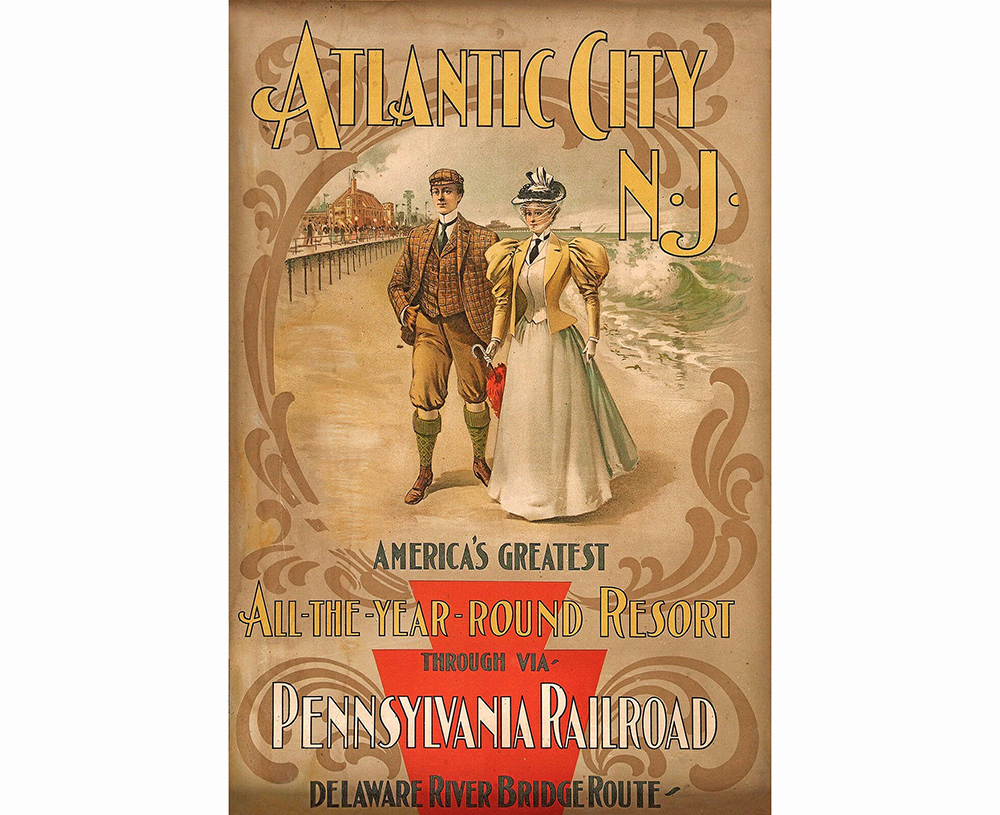By Mari D’Albora Dattolo
On August 11, 1880 the mill town of Mays Landing, NJ was called to serve in a most unexpected and tragic circumstance. Just seven weeks before, the spur for the new railroad line, a subsidiary of the Pennsylvania Railroad, (PRR), opened a city to shore route. The West Jersey Line connected the county’s seat with the cities of Philadelphia and Atlantic City. It came by way of R.D. Wood and Sons to move both passengers and freight, but more specifically cotton and its by-products, following the American Civil War. Cotton mills and their noted industrialist owners would often dominate both the economy and politics in the latter part of the nineteenth century. On this historic date, the first charter excursion would have been eagerly anticipated by the 1300+ working class men, women and children from Philadelphia. A welcomed excursion to the Jersey Shore!
Passengers were Irish immigrants hailing from St. Anne’s Literary Society and neighboring Philadelphia churches. They left early from the city, taking the ferry into Camden then leaving for the shore on the twenty four chartered passenger cars. Rather than run one consist to Atlantic City, just prior to departure the party was divided into two trains, comprised of sixteen and eight passenger cars, respectively. Not only were the cars over occupancy limits, but rules of the road would necessitate enforcement regarding lag time between the two. On this first charter of the inaugural season, their neglect would prove a deadly error.
After a day of pleasant memories at the beach, the weary travelers boarded the cars for the return. The first train left on a 6PM departure, followed by the second at 6:05PM. Seventeen miles from Atlantic City, during an evening summer storm, the trains reached the village of Mays Landing.

They cleared the single track for the southbound express, just beyond the trestle bridge over the Great Egg Harbor River. While the first train was still clearing the track of the last two cars, the second locomotive telescoped the first in a rear end collision, erupting in a boiler explosion. Passengers in the last wooden car were scalded by the soaring temperatures of the steam cylinder with estimates as high as 200 degrees. Thirty fatalities and sixty injuries were recorded due to burns with the added inhalation of steam scorching their lungs. The accident scene overwhelmed the village as the passengers nearly outnumbered the entire population of Mays Landing. Unprepared for the extent of the calamity, neighbors became unknowing first responders, as their homes were transformed into makeshift emergency rooms, morgues and waiting areas for over a thousand stranded passengers. A national telegraph system would alert dozens of newspapers across the country of the tragedy, while acknowledging the kindness extended by the citizens of the South Jersey community.
Locally, research into state and county archives have implied a lack of candor in reports to area government agencies and public records.

Between the cities of Philadelphia and Atlantic City the veil is lifting on the clues. Hospital records. Board meeting minutes. Court records. County documents. “In an era when rails ruled the roads and class determined privilege”, this story had very nearly been lost to time.
In 2018, an effort was launched to bring an award winning filmmaker to Mays Landing to create a made for television documentary. Funding fell through and interest in the project waned. A historic narrative account of Between the Shore and the City: Tragedy in Mays Landing was authored and released for the anniversary in August 2021.










